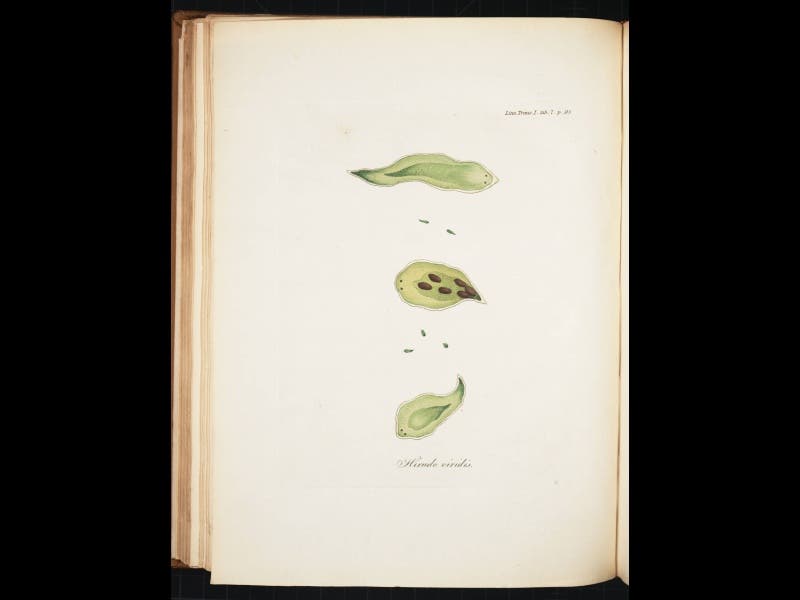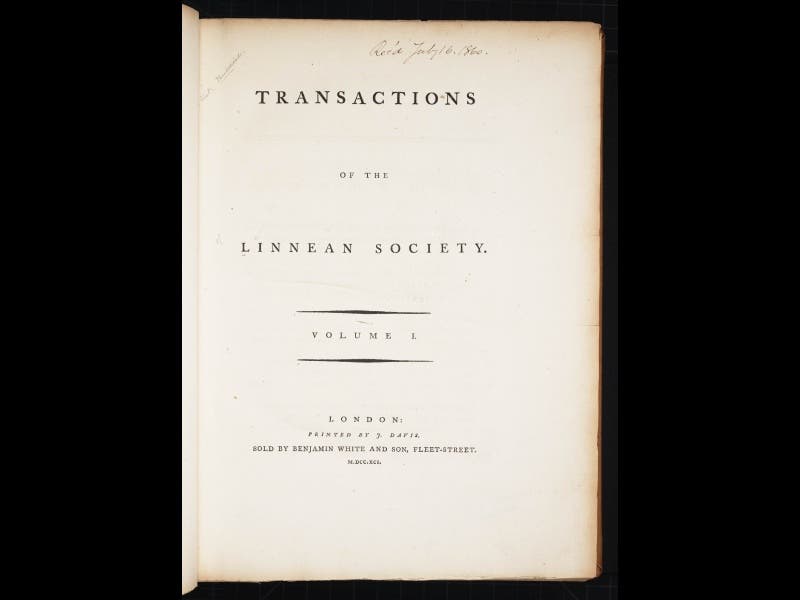Scientist of the Day - James Edward Smith
James Edward Smith, an English botanist, was born Dec. 2, 1759. The great Swedish naturalist Carl Linnaeus died in 1778 and left all his manuscripts and specimens to his wife, but when she became financially strapped in 1783, she offered up the entire collection to the highest bidder. The Swedish government should have stepped up to the plate, but the King was out of the country and others were reluctant to take responsibility. So the widow Linnaeus offered the collection to England’s Sir Joseph Banks. Banks realized that he owned quite enough stuff already, but he mentioned the offer to Smith, and Smith jumped at the chance. He paid £1,000 for 26 large chests of pressed plants, drawings, paintings, manuscripts, and Linnaeus' library, which arrived in London on board the ship Adventure in 1784. Smith founded the Linnean Society of London in honor of the collection, then later took it off to his estate. But when Smith died in 1828, his widow sold the Linnaean collection, as well as Smith’s own collections, back to the Linnean Society for 3000 guineas (more than one widow seems to have profited from this collection!). Smith also founded a journal in 1791, Transactions of the Linnean Society of London, of which we have a complete run in the Library.
One often runs across the story that when the Swedish government learned in 1784 that a national treasure was bound for England, they sent a ship to intercept the Adventure, but without success. The story is not true, but Robert Thornton included an engraving of the attempted interception, along with a portrait of Smith, in his New Illustrations of the Sexual System of Linnaeus (1799-1807) (see first image above). We show you the engraving from the National Portrait Gallery, London, because, curiously, this engraving was never included in our copy of Thornton's book, which seems otherwise complete.
Other images show the title page of the first volume (1791) of the Linnean Society Transactions, edited by Smith, as well as three plates from the first volume, showing, in order, a variety of lichens, a newly discovered Green Leech, and a Dillenia, a magnolia-like evergreen from southern Asia.
Dr. William B. Ashworth, Jr., Consultant for the History of Science, Linda Hall Library and Associate Professor, Department of History, University of Missouri-Kansas City











